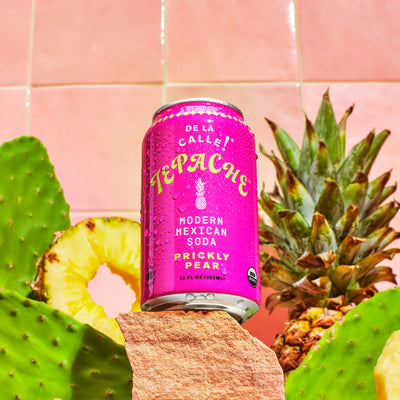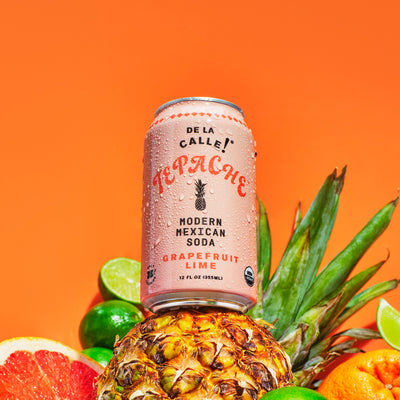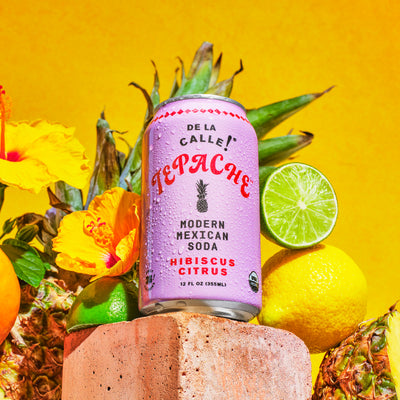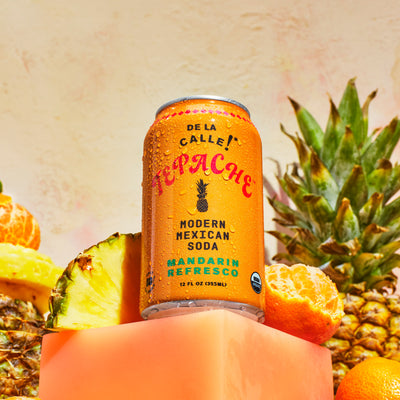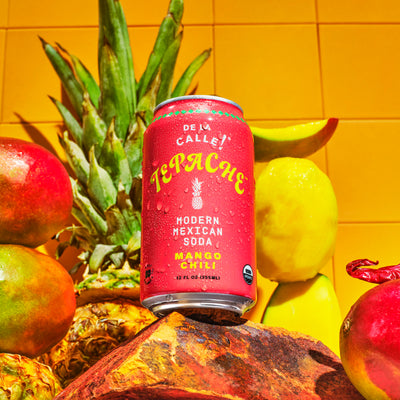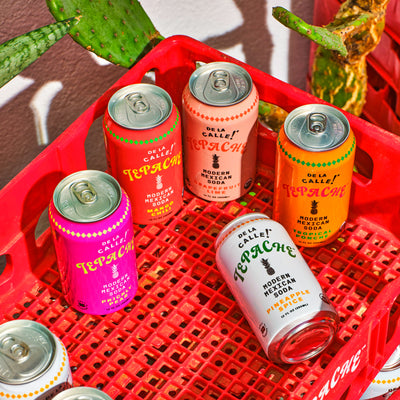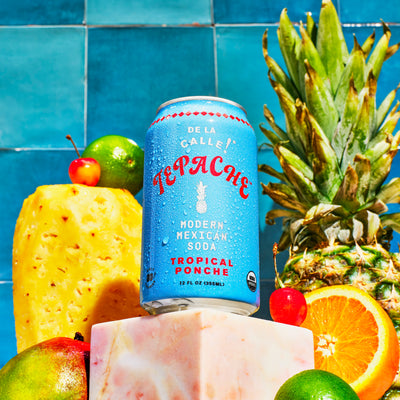Fermented Pineapple: Tepache Recipe Guide

If you’re craving the delicious, refreshing taste of tepache and want to make it from home, check out our tepache recipe guide!
In this article we’ll provide a bit of background information on tepache and guide to making it from scratch.
What is Tepache?
Tepache is a traditional Mexican beverage made from fermented pineapple, specifically the peels and core. It has a light, citrusy flavor and is carbonated which gives it the texture of beer or kombucha.
Although all tepache is made using pineapple, panela, and water, there are several variations to the recipe and additional spices and fruits you can add to enhance the flavor.
What is Piloncillo?
Panela, also known as piloncillo, is a raw form of cane sugar that is unprocessed and often used in Mexican cooking.
Given that it is not processed, piloncillo retains its original brown color and has a taste similar to that of molasses. Other names for piloncillo include panela and panocha.
Health Benefits
Given that tepache is a fermented beverage, it is extremely good for your gut and can help regulate and restore the bacterial equilibrium needed for good digestion. It is also rich in probiotics which aid in digestion. Due to the pineapple, tepache is also rich in vitamin C, a powerful antioxidant that can protect cells from the harmful effects of free radicals.
Is Tepache Alcoholic?
Although tepache has some alcohol in it because due to the fermentation process, it is about 2% ABV and therefore cannot cause intoxication.
If you want your tepache to have an even lower alcohol content, you can ferment it for less time.
Making tepache in warmer climates usually leads to a higher alcohol content, but for it to truly be considered an alcoholic beverage it has to be mixed with other alcoholic beverages such as beer or tequila.
Recipe Guide
Making tepache is a surprisingly easy process that takes at least three days, given that the pineapple peels need time to ferment.
The ingredients you’ll need to make tepache are:
-
1 pineapple
-
1 cup of piloncillo or organic sugar
-
1 cinnamon stick (if desired)
-
3 cloves (if desired)
-
2 quarts of water
To begin making tepache, you first need to wash your pineapple well. Given that tepache is made using the peels and core, it’s important to make sure they are clean and any pesticides or chemicals used during the farming process are washed away.
Once your pineapple is clean, cut the peels off and slice the meat to eat later making sure to place the core to the side. In a large container or pitcher, combine the pineapple peels and core, piloncillo, cinnamon stick, cloves and water. The cinnamon and cloves give the tepache a round, spicy flavor, but are completely optional and can be left out if you want your tepache to be purely pineapple flavored.
Another method you can use for this stage of the process to fully dissolve the piloncillo is to heat the water and bring it to a boil in a pot and add the piloncillo to the boiling water. The heat of the water will allow it to dissolve fully. Once it is fully dissolved, you can take the pot off the heat and add the other ingredients.
Once all the ingredients are in the pitcher, cover it with plastic wrap or a cheese cloth. Regardless of what you use to cover the pitcher, make sure it isn’t too tight so that the tepache can breathe while it ferments.
Luckily, once all the ingredients are in the pitcher, you can set the mixture aside and let it ferment for 24 hours. If you live in a very hot climate or somewhere without air conditioning, check on the mixture sooner, after about 12 hours.
There should be a white foam that has accumulated on the top of your mixture. With a spoon, gently skim the white foam off the top of the liquid. Let it sit for another 24 to 36 hours depending on how strong you want your tepache to be.
Once it is adequately fermented, strain the mixture so as to separate the tepache from the pineapple rinds. Taste your tepache and add sugar or agave to sweeten it if necessary. If your tepache is too strong, you can also dilute it by mixing it with water using a 1:1 ratio.
Recipe Variations
If you want to add a twist to your tepache, consider the following recipe variations:
-
Add lime juice to the final mixture. The lime will give the tepache a delicious, refreshing punch that pairs well with the sweet flavor of the pineapple.
-
Add other spices such as ginger, tamarind, and chilli to your tepache if you want it to be stronger.
-
Much like with sangria, you can add chopped fruit to your tepache before serving. We recommend adding fruits such as apples, oranges, and mango to your tepache to give it a stronger fruity flavor.
What is Fermentation?
Fermentation is a food preparation process that makes food more digestible, flavorful, nutritions, or all three. In order to ferment foods, microbes such as bacteria and yeast are used to convert carbohydrates in foods into alcohols and acids.
As well as making food more nutritious, fermentation is also a form of preservation that allows food to stay good for longer.
What Happens If My Tepache is Not Fermenting?
Usually the reason that fermentation does not work properly is because the temperature is off.
For example, if you choose to boil the water to dissolve the sugar it must be completely cool before you add the pineapple peels and core. You also have to make sure that the room in which your tepace brews is not too cold and therefore not conducive to fermentation.
In general, tepache fermentation works best between 77-86 degrees Fahrenheit.
How Should I Serve and Store My Tepache?
Tepache is best served cold over ice with any additional chopped fruit or garnish you want to add.
In terms of storing tepache, it can last for up to a week in the refrigerator. You’ll know when it has gone bad because it will smell strongly of vinegar.
Uses
Tepache is a delightfully refreshing drink that can be consumed on its own, usually over ice. That being said, it also pairs well with tequila, agave, and other citrus juices and therefore makes the perfect base for many cocktails.
Conclusion
Tepache is an easy-to-make, healthy beverage that can improve your gut functioning and provide you with necessary prebiotics and antioxidants. This delicious Mexican beverage can be consumed on its own or added to cocktails. It is fun to experiment with different spices and fruits to add new twists to the classic recipe.
That being said, in order to make basic tepache, all you need is pineapple, some form of sugar, water, and time, but if you’re ready to just enjoy it, our tepache variety pack has you covered!
Sources:
https://www.ncbi.nlm.nih.gov/pmc/articles/PMC3249911/
https://www.healthline.com/nutrition/foods/chili-peppers
https://news.extension.uconn.edu/2015/11/20/fermentation-preservation-with-benefits/


